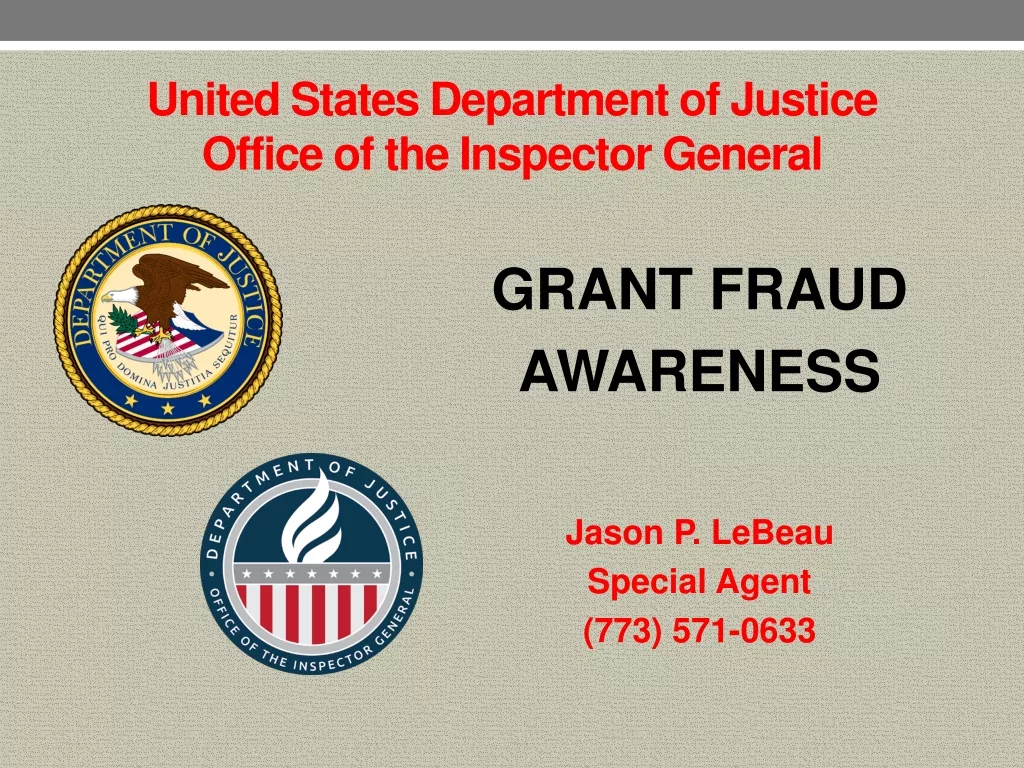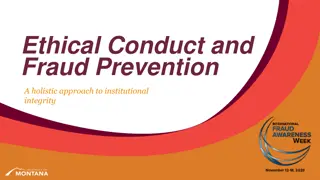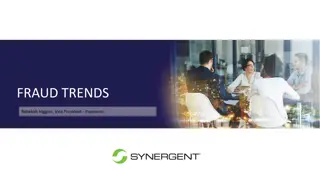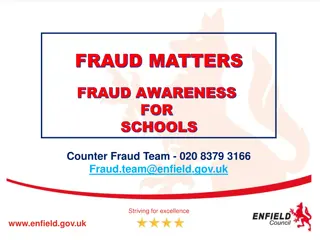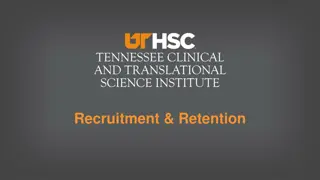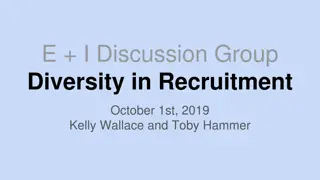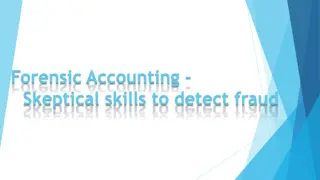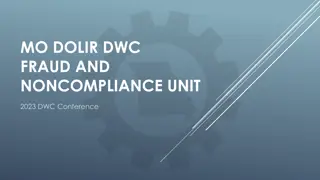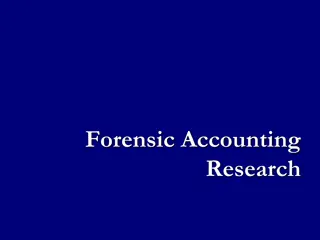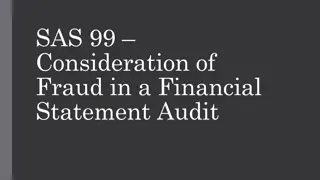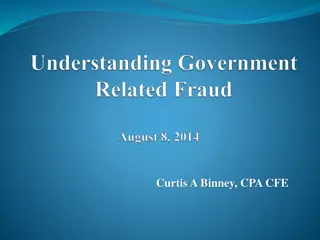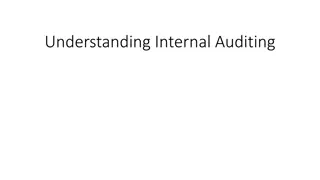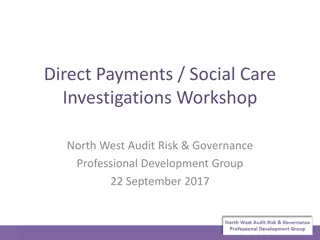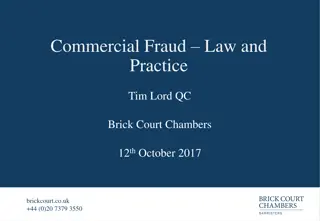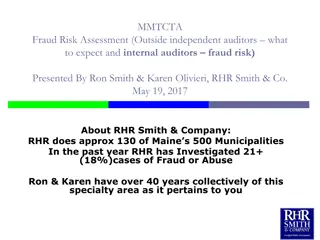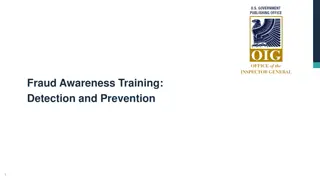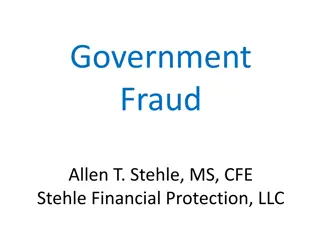Enhancing Safe Recruitment Practices: Insights from CIFAS Internal Fraud Conference
Explore key insights from the CIFAS Internal Fraud for HR and Recruitment Professionals Conference, focusing on roles in recruitment decisions, disclosure practices, levels of DBS checks, referral and barring processes, and reasons for receiving referrals. Learn about the importance of making balanced suitability decisions and maintaining safe recruitment practices.
Download Presentation

Please find below an Image/Link to download the presentation.
The content on the website is provided AS IS for your information and personal use only. It may not be sold, licensed, or shared on other websites without obtaining consent from the author.If you encounter any issues during the download, it is possible that the publisher has removed the file from their server.
You are allowed to download the files provided on this website for personal or commercial use, subject to the condition that they are used lawfully. All files are the property of their respective owners.
The content on the website is provided AS IS for your information and personal use only. It may not be sold, licensed, or shared on other websites without obtaining consent from the author.
E N D
Presentation Transcript
CIFAS - Internal Fraud for HR and Recruitment Professionals Conference Presented by: David McLaren 26 September 2018
Our Role recruitment decisions Disclosure To help employers make safer & Barring To help prevent unsuitable people from working with vulnerable groups including children 2
Disclosure: To assist organisations to make balanced suitability decisions Three levels of DBS check Basic Standard Enhanced The Update Service Provides continuous monitoring of information Enables safer portability 3
Levels of DBS check Basic Standard Enhanced Level of check 26 44 25 Spent & unspent convictions, cautions, reprimands and warnings (subject to filtering ) Spent & unspent convictions, cautions, reprimands and warnings (subject to filtering) Unspent convictions Information provided Relevant Police intelligence Adults and/or children's barred list (Optional) Hospice admin roles with access to patients care workers, nurses, charity trustees Examples of who is eligible Anyone 4
Referral & Barring: To help prevent unsuitable people working with vulnerable groups including children Receive and Consider Referrals Automatic barring referral With or without representations Disclosure referral Discretionary referral Make Barring Decisions Manage Barred Lists for Eng, Wales & N.I. 5
Why might we get a referral? Duty to Refer (Employers) or Power to Refer (Regulators/LA s) Two main conditions have been met: ONE: Withdraw permission to engage in regulated activity - Dismissed, Redeployed, Retired / Redundant, Resigned TWO: Referring party thinks that the person has either: - Engaged in relevant conduct or - Satisfied the harm test or - Received a caution for, or been convicted of a relevant offence 6
Our role in safe recruitment DBS provides you with relevant information Clear or clean DBS certificates are not an approval / accreditation Equally, a certificate that contains information does not automatically disqualify an applicant (with the exception of those on a barred list) 7
Our role in safe recruitment, cont All RBs and recipients of certificate or Update Service information must: Comply with DBS ID Validation guidance Have a Suitability of Ex-Offenders Policy Discuss the contents of a DBS certificate with the applicant prior to the withdrawal of any job offer 8
Recent Changes Introduction of our Basic Disclosure product Previously delegated to Disclosure Scotland Now available from DBS in two ways: Through Responsible Organisations Directly via DBS online using .gov.uk Verify Available to anyone over 16yrs no eligibility restrictions 9
Recent Changes cont Introduction of our online Barring services Referrals can now be submitted online Faster no delays associated with postal services More accurate data is validated at the point of submission More efficient the referrer is guided through the process and advised to submit all relevant data first time round 10
Current Challenges ID Validation The first priority for DBS is safeguarding, so it is right that we strive for the highest levels of ID validation and accuracy We recognise that individuals from under-represented groups may struggle to present the required documents Our guidance now assures the right-to-work Our processes are always being reviewed in light of both security and accessibility https://www.gov.uk/government/publications/dbs-identity-checking-guidelines 11
Current Challenges, cont Certificate fraud / certificate tampering We have recently updated and republished our guidance regarding certificate security It is essential that those people considering certificates make themselves aware of the security features that can be checked Our Basic product now includes an online certificate which can have a security benefit https://www.gov.uk/guidance/dbs-check-requests-guidance-for- employers#security-features-of-a-dbs-certificate 12
Current Challenges, cont Effective use of the Update Service Recent stakeholder engagement has concluded that employers vary in their approach to using the Update Service Some have reported the assumption that a certificate demonstrates ID, whilst others report not seeing the original certificate at all The Update Service can accelerate recruitment and deliver timely updated information but only if used correctly! https://www.gov.uk/government/publications/dbs-update-service-employer- guide/dbs-update-service-employer-guide 13
Current Challenges, cont Recruitment and DBS check fraud There has been an increase in instances of wholly fraudulent organisations falsely advertising jobs and taking payment for DBS checks that never materialise SAFERjobs have led on publicising and raising awareness of this risk DBS encourages all RBs to join the SAFERjobs scheme https://www.gov.uk/government/news/help-reduce-recruitment-fraud 14
How you can help DBS Checks apply for the appropriate level for the role Referrals remember your legal duty to send us the right information at the right time Make use of our online services Website read our information sheets Application guidance use it to avoid unnecessary delays Take steps to ensure the certificates you consider are genuine Always use DBS services as part of wider safeguarding measures 15
Public 16
Thank you 17



